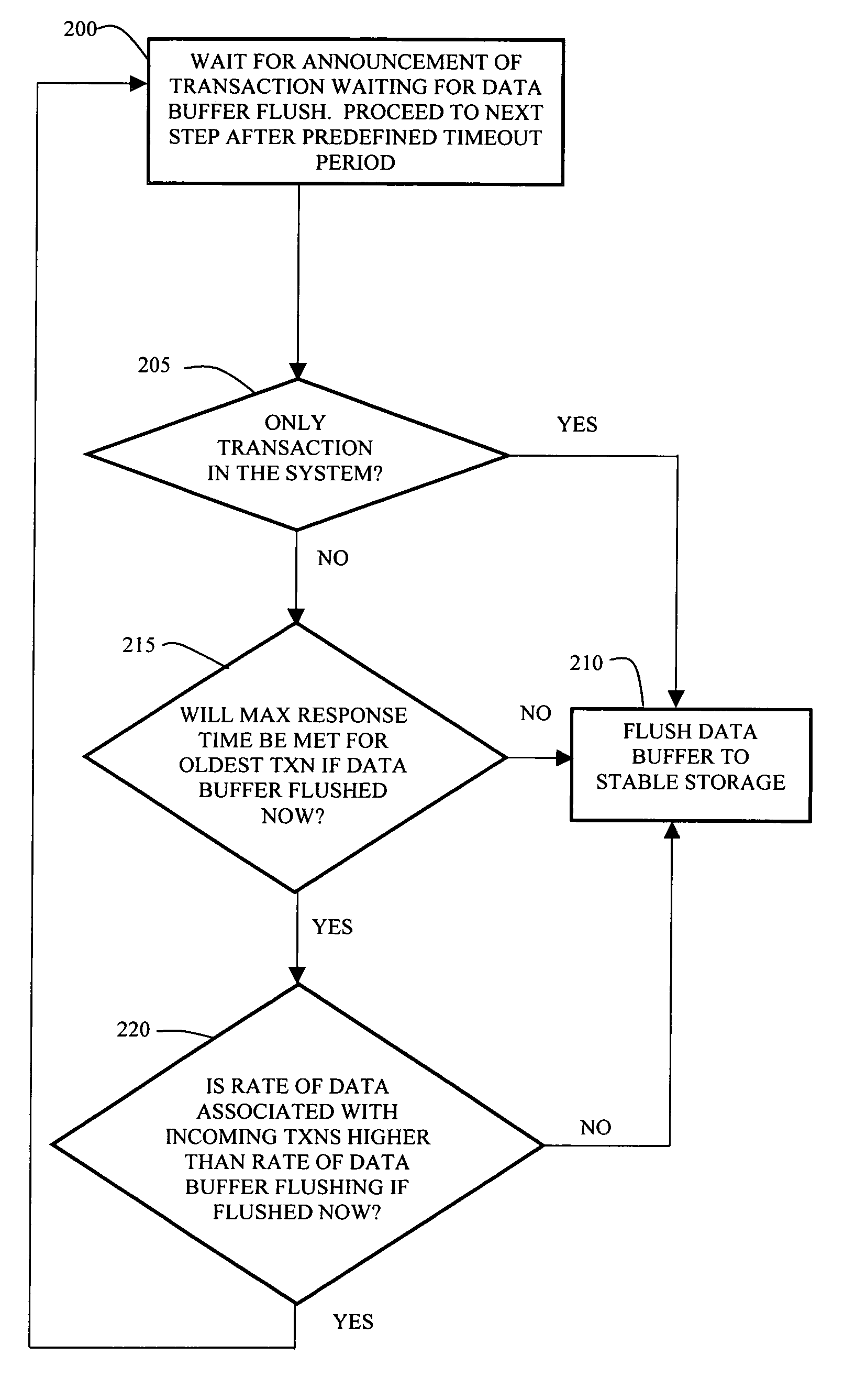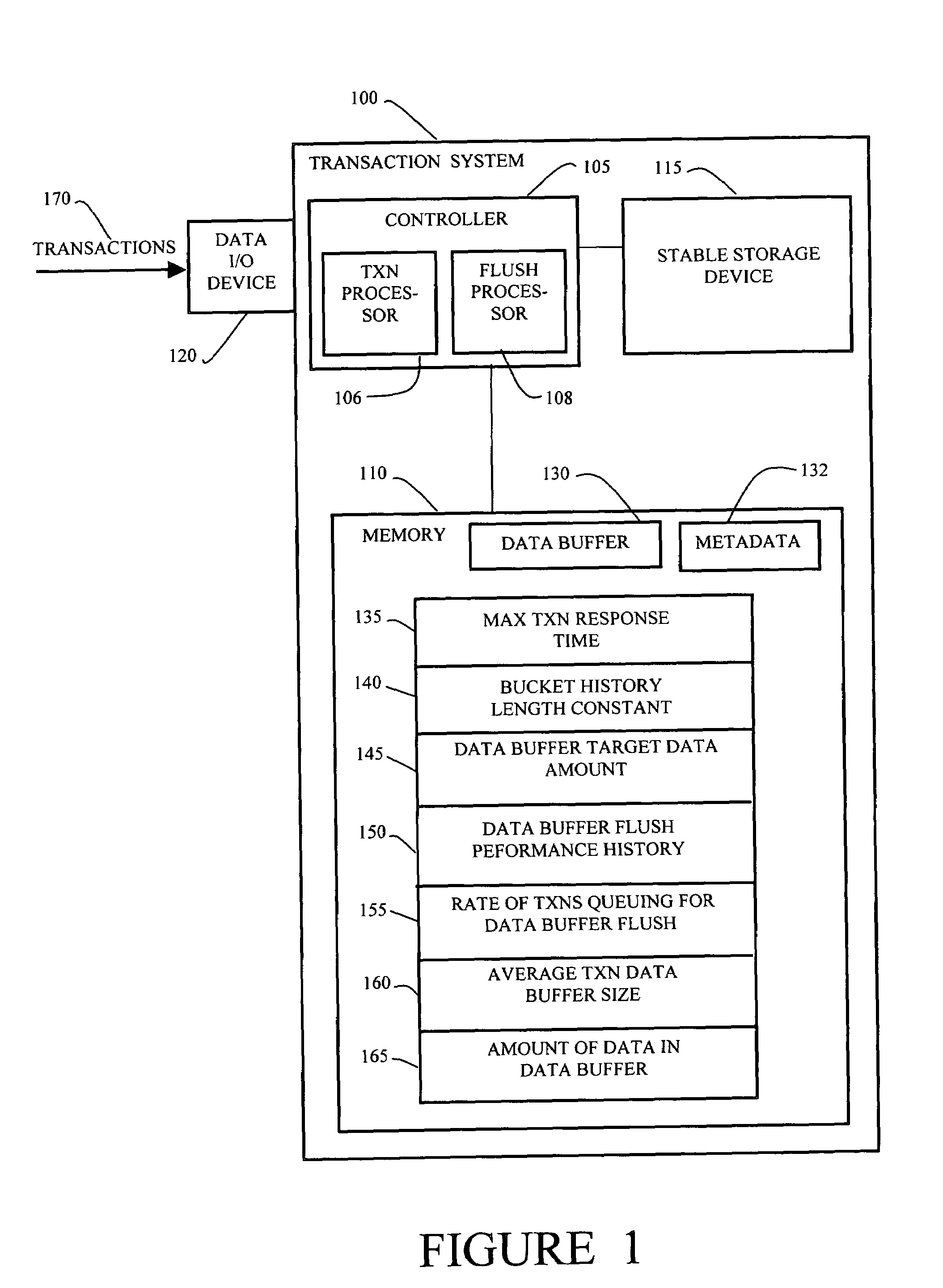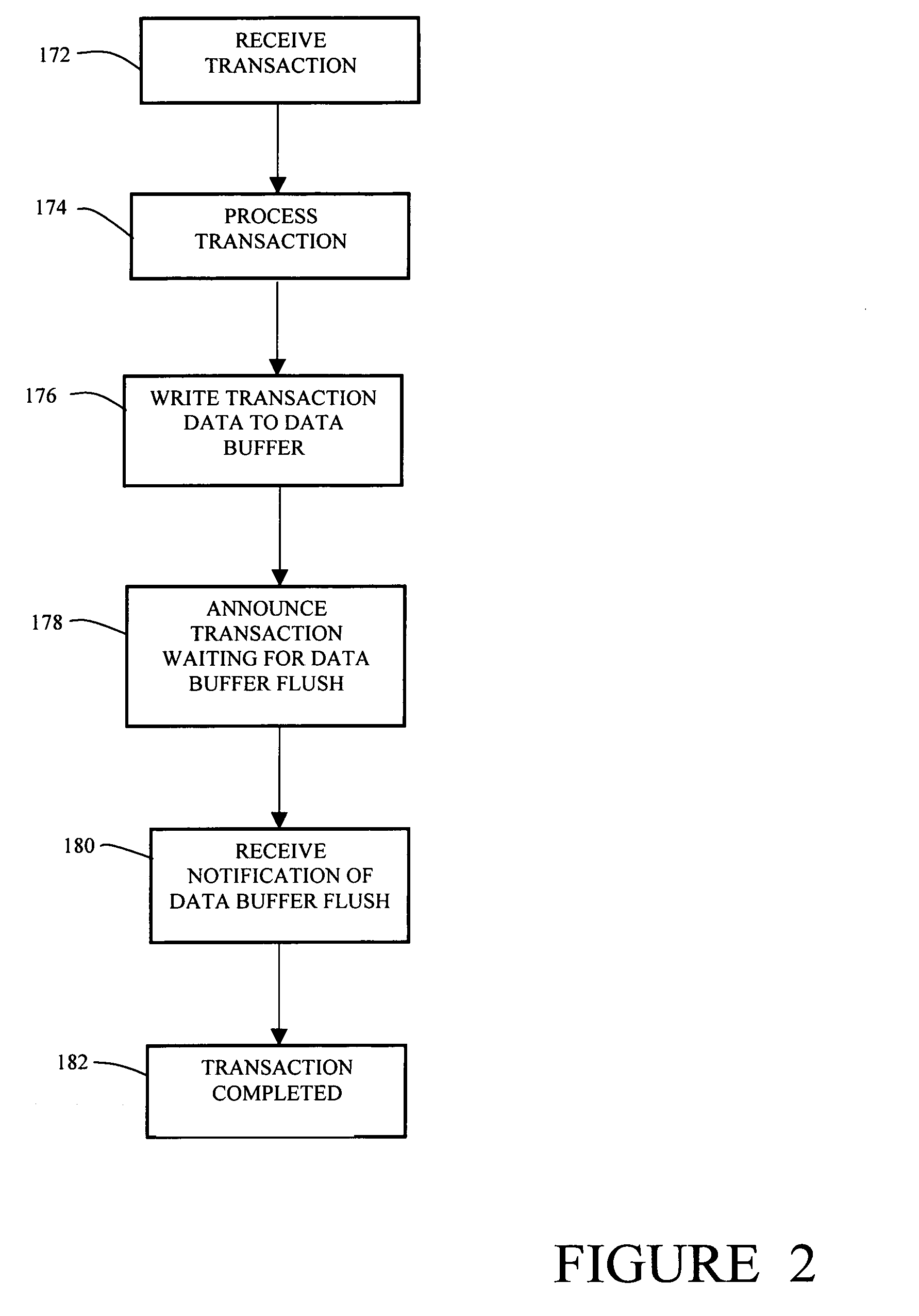Method and apparatus for self-tuning transaction batching
a transaction batching and batching technology, applied in the field of self-tuning transaction batching, can solve the problems of high fixed overhead, slowed transaction processing performance, and inability to provide a system for efficient transaction processing, and achieve efficient batching transactions, efficient batching transactions, and efficient batching transactions
- Summary
- Abstract
- Description
- Claims
- Application Information
AI Technical Summary
Benefits of technology
Problems solved by technology
Method used
Image
Examples
Embodiment Construction
[0029]In a transaction system, a dynamic batching process enables efficient flushing of data in a data buffer to a stable storage device. The transaction system uses constant values and dynamic values and a system performance history to adjust the rate of flushing data and also to adjust the amount of data flushed in each flush operation. The transaction system is able to respond to both spikes in rate of received transactions as well as more gradual changes in the rate of received transactions and to adapt to the various constant and dynamic changes in the performance characteristics of underlying hardware.
[0030]FIG. 1 is a block diagram of an example embodiment of a transaction system 100 according to principles of the invention. The transaction system 100 is, for example, a computer. Alternatively, the transaction system 100 is a database system. The transaction system 100 includes a controller 105, a memory 110 and a stable storage device 115. A data input / output device 120 is c...
PUM
 Login to View More
Login to View More Abstract
Description
Claims
Application Information
 Login to View More
Login to View More - R&D
- Intellectual Property
- Life Sciences
- Materials
- Tech Scout
- Unparalleled Data Quality
- Higher Quality Content
- 60% Fewer Hallucinations
Browse by: Latest US Patents, China's latest patents, Technical Efficacy Thesaurus, Application Domain, Technology Topic, Popular Technical Reports.
© 2025 PatSnap. All rights reserved.Legal|Privacy policy|Modern Slavery Act Transparency Statement|Sitemap|About US| Contact US: help@patsnap.com



